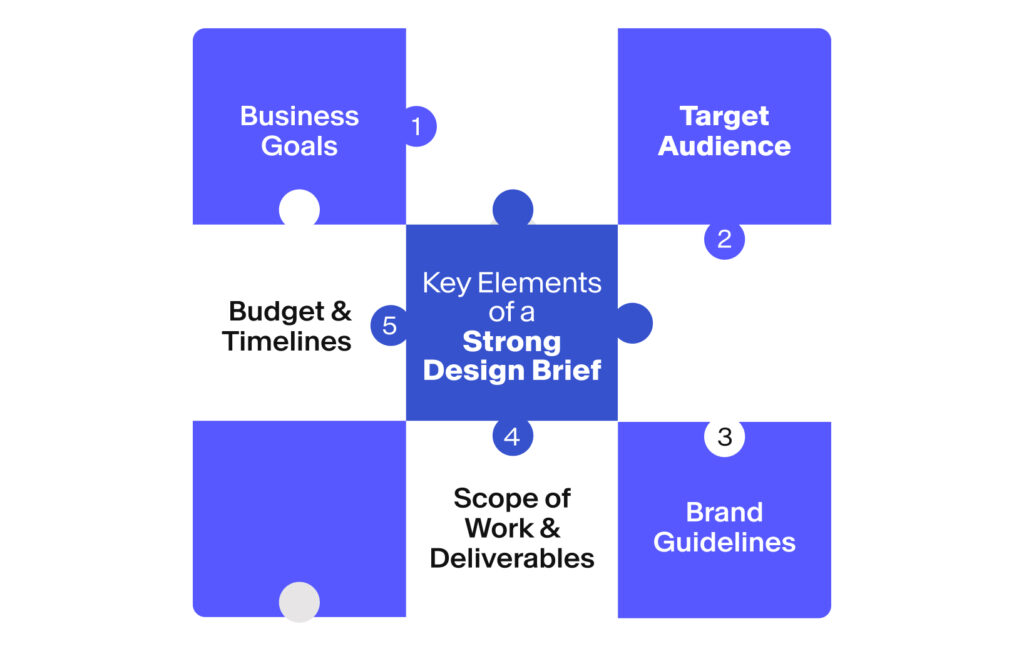With the slew of digital products launched every year, success hinges on the clarity of the purpose and vision of the product. Whether designing an app or building a brand’s identity through a website, the foundation for achievement—from brand building to increasing organic traffic to increasing sales—lies in preparation. This preparation often begins with a strong design brief, a document that is the backbone of a successful design project. A well-written design brief defines the project and acts as a guiding reference point for the design team, ensuring that everyone remains aligned with the project’s goals and objectives.
Stuti Mazumdar - January 2025

What is a Design Brief?
It typically includes key information such as the target audience, project timeline, budget, key deliverables and requirements, and technical capabilities of the team (often including existing or feasible tech stack). Without a clear and comprehensive design brief, projects often lack direction, leading to misaligned goals and wasted resources.
Key Elements of a Strong Design Brief

1. Business Goals
Clearly, stated mission and business objectives are the foundation of a strong design brief. They help the design team understand what the project aims to achieve and guide overall design decisions to lead to a holistic and intuitive user experience.
2. Target Audience
3. Brand Guidelines
A successful design project must align with the brand’s identity. If an organization has an existing design language stated in a brand playbook or has content guidelines that serve as guardrails when crafting content and communication to its audience, then it should be well documented within the design brief. It should include existing guidelines, such as logos, colors, typography, and tone of voice. These elements ensure that the final output remains consistent with the brand’s values and doesn’t stray too far away from the universe of digital experiences the brand has to offer.
4. Scope of Work and Deliverables
A strong brief provides clarity on the project’s scope and the specific deliverables expected. Whether it’s a website design, packaging, or promotional material, outlining the requirements helps the team know exactly what they need to create.
5. Budget and Timelines
One of the most practical aspects of a design brief is setting clear expectations for the project timeline and budget. Defining these parameters upfront avoids misunderstandings and ensures the design team can plan their work effectively without overspending or missing deadlines.
Ensure that when setting up design sprints based on the deadlines stated in the brief, a team keeps enough room to manage spilling a task over to the successive sprint at all times.
Challenges of an Inadequate Design Brief
A design brief, often confused with a step-by-step guide on a product requirement, is anything but a checklist of action items. A badly written brief can simply derail the project and sabotage the product crafted. While the benefits of a strong design brief are clear, the risks of an inadequate one can be costly. Here are some common challenges that arise when the design brief is poorly written or incomplete:
1. Misaligned Goals
If business and creative teams work async in an organization, we may witness a loss of effective communication and disorganized product requirements that amalgamate into a poor design brief.
Without a clear understanding of the project’s objectives, UI UX designers, and other UX professionals alike, may produce work that doesn’t meet business goals and expectations.
2. Budget Overruns and Missed Deadlines
Ambiguity in the design brief can result in unexpected costs and delays. Without clear parameters, the project is more likely to run over budget or miss key milestones in the project timeline.
3. Inconsistent Work
When brand and content guidelines are not clearly defined, one may guarantee the final look of the digital experience or product lacks cohesion for the overall brand identity. This inconsistency can harm the organization’s reputation.
4. No Retrospective Reviews
Even with the product launched worldwide for the users to interact with and consume, you may find it difficult to critically evaluate the product in retrospect without a clear design brief. Hence, it is ideal to begin a project only after a thorough discussion with all the stakeholders involved.



